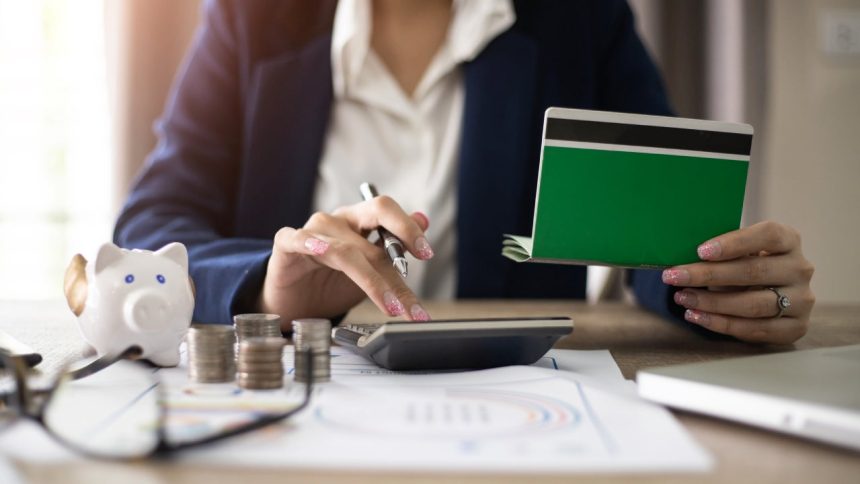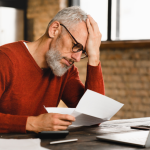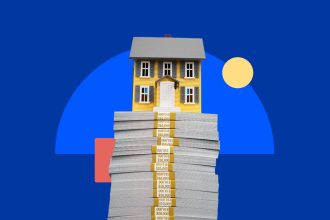Prapass Pulsub/Getty Images
Key takeaways
- Depending on where you do your banking, you can check your account balance through digital channels, over the phone, in person and via a paper statement.
- Keeping a close eye on your account balance can help you stick to a budget, avoid unnecessary fees and spot fraudulent activity.
- When you’re checking your balance, be sure to take steps to protect personal data by using strong passwords, securing connections and remaining aware of phishing scams.
Look at the phone in your pocket, pick up the phone and call your bank, head to a branch and talk to a teller — there are loads of options for checking your bank account balance. Here’s a rundown of six options to get a current view of your finances.
Ways to check your account balance
On the bank’s website
Online banking allows you to access your bank account from any computer or device with internet access.
- Log in to your bank account on the bank’s website using your username and password. (If you haven’t created an online profile yet, you’ll need to go through the process of verifying your identity. Make sure you select a strong password.)
- Navigate to the account balance section. It should be listed under “accounts” or “account information.”
- Depending on your bank’s website layout, you may need to click on your account to view your balance. Most online banking sites offer a clear overview of your account balance and transaction history.
On a mobile banking app
Most banks now offer their own apps to make banking easy and convenient for their customers.
- Download the app from your bank’s website or the app store of your choice.
- Sign in to your account using the same credentials as you do for your desktop-based online banking system.
- Navigate to the account information section. Most mobile banking apps provide an up-to-date view of your account balance and recent transactions.

“Checking my balance on my bank’s mobile app takes less than five minutes. All I have to do is click on the app on my phone and then enter my username and password. It’s quick and easy.”
— Sheiresa Ngo, Bankrate deposits writer
At an ATM
If you don’t want to manage your finances digitally — or you don’t have access to a secure Wi-Fi connection — you can find an ATM location to check your balance.
- Find an ATM that is part of your bank’s fee-free network to avoid getting charged for checking your balance.
- Insert your debit or ATM card, enter your Personal Identification Number (PIN) and select “balance inquiry” or a similar option. Your account balance will be displayed on the screen, along with any recent transactions.
- Choose to print out a receipt to keep track of the current balance. Alternatively, you may be able to email yourself a copy of the balance.
Over the phone
Most banks still offer telephone banking services, which allow you to check your account balance by phone.
- Call the phone number on the back of your debit card.
- Follow the prompts from the automated voice system to access your account balance.
- Be prepared to verify that it’s really you by entering your account number and answering a few security questions before you can hear your balance.
Through bank statements
While you won’t get an immediate picture of what’s in your account, you can also monitor your balance on a monthly basis through bank statements.
- Decide whether to receive a paper copy of your statement in the mail or opt for paperless statements that will appear in your online banking platform.
- If you’re logging in to the online banking platform, you can see your balance without going in to see your statement but the statement is still a worthwhile document for transaction history. You can review all the transactions and the balance at the end of the statement period.
- If you’re receiving paper statements, decide whether you’ll be storing them in a secure area or shredding them to take extra precautions to protect your private information.
Note that some banks have begun charging for paper statements, so be sure to ask if you’ll incur a fee for an envelope in your mailbox.
With a bank teller
If you do your banking at a bank with physical locations, you can still ask for face-to-face balance updates in a branch location.
- Make sure you have your account number, bank card and identification. This information will be necessary to confirm you are the account holder.
- After confirming your identity, a bank teller will provide your balance. The teller can provide this information verbally or print out your recent transactions and current balance.
Why it’s important to monitor your bank account balance
There are three key reasons why it’s critical to keep an eye on your bank account balance:
- You’ll be a better budgeter. By understanding how money is moving in and out of your checking and savings accounts, you’ll be able to spot ways to save more, spend less and plan for the future.
- You’ll avoid the awkwardness (and fees) of denied transactions. Knowing how much money is in your checking account can help you pay your bills. You’ll also avoid declined transactions and unnecessary fees (such as overdraft fees).
- You’ll immediately catch thieves. According to research from J.D. Power, 29 percent of bank customers have experienced some type of fraudulent activity in the past 12 months. If you regularly check your account balance, you’ll be able to report suspicious transactions to avoid the stress of seeing someone drain your account down to zero.
Make sure to protect your sensitive information
When checking your bank account balance, it’s essential to protect your personal information from hackers or scammers. Here are some tips to keep your information secure:
- Use a strong password and change it regularly.
- Don’t share your account details with anyone you don’t trust.
- Check your account regularly, and report any suspicious activity to your bank immediately.
- Only access your account online through a secure connection, such as your bank’s official website or app.
- Be cautious of phishing scams, and never click on suspicious links or attachments in emails or text messages.
- If you’re using an ATM, make sure it’s in a well-lit area and run your card as a credit card or shield your PIN when you enter it to avoid a common scam called skimming.
By using these methods to check your bank account balance, you can stay on top of your finances and ensure the safety of your personal information.
Next steps
Why we ask for feedback
Your feedback helps us improve our content and services. It takes less than a minute to
complete.
Your responses are anonymous and will only be used for improving our website.
Help us improve our content
Read the full article here














